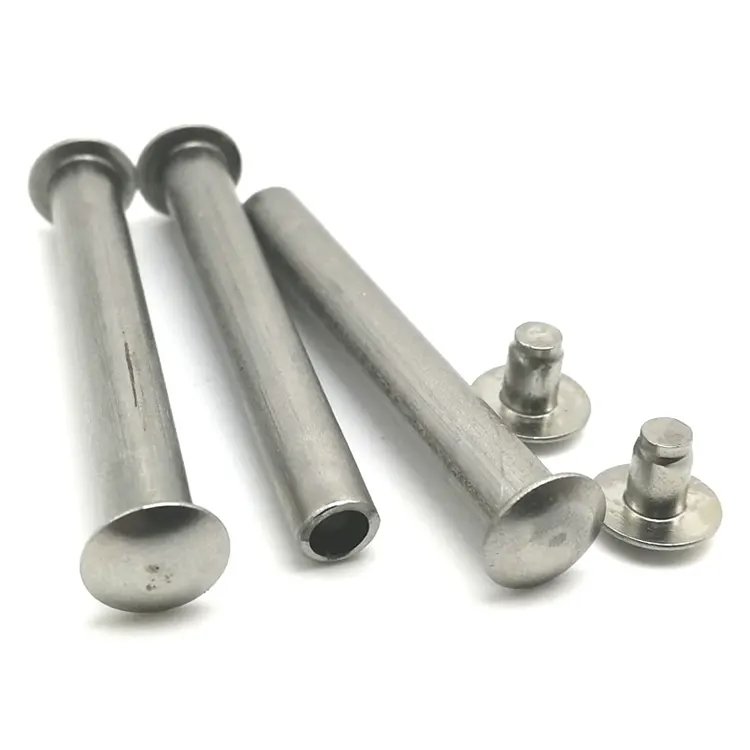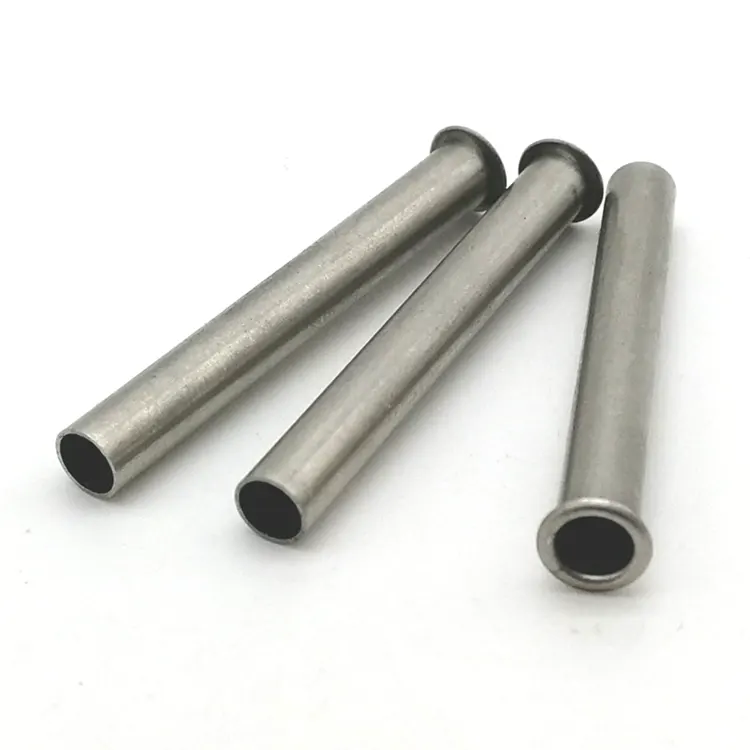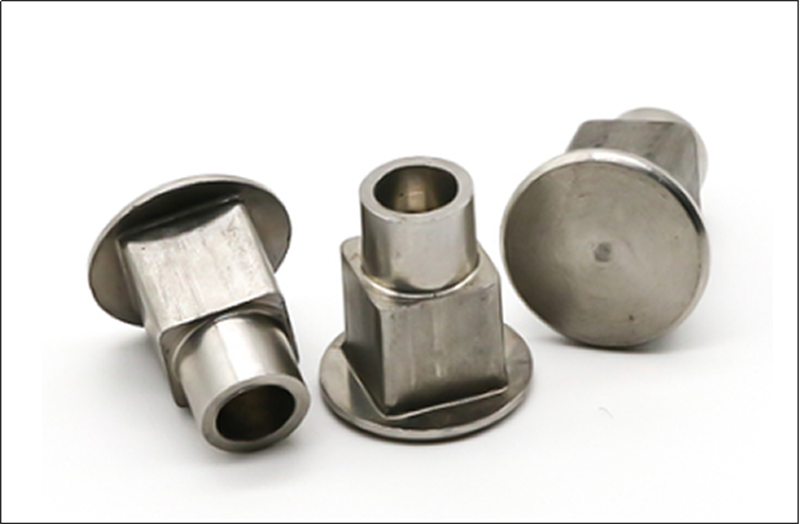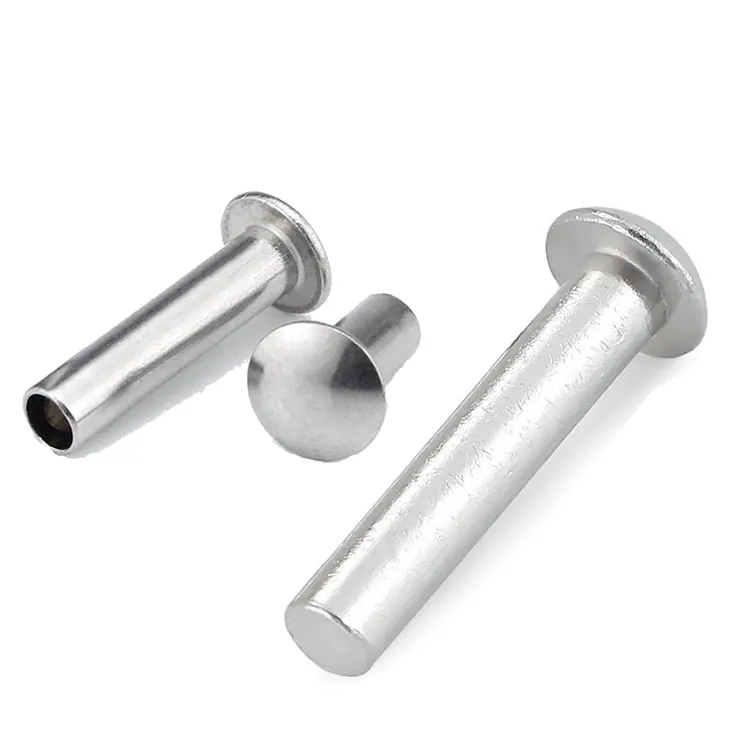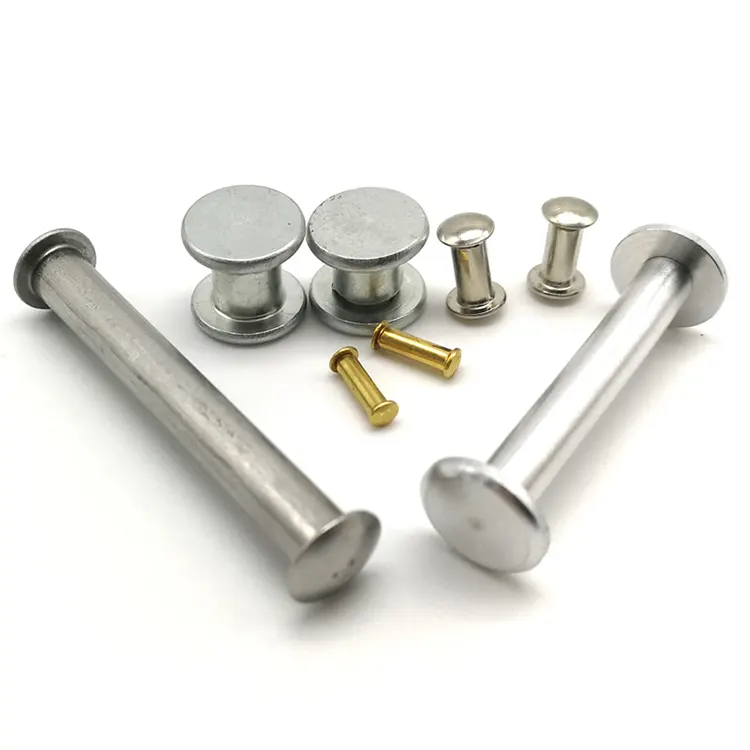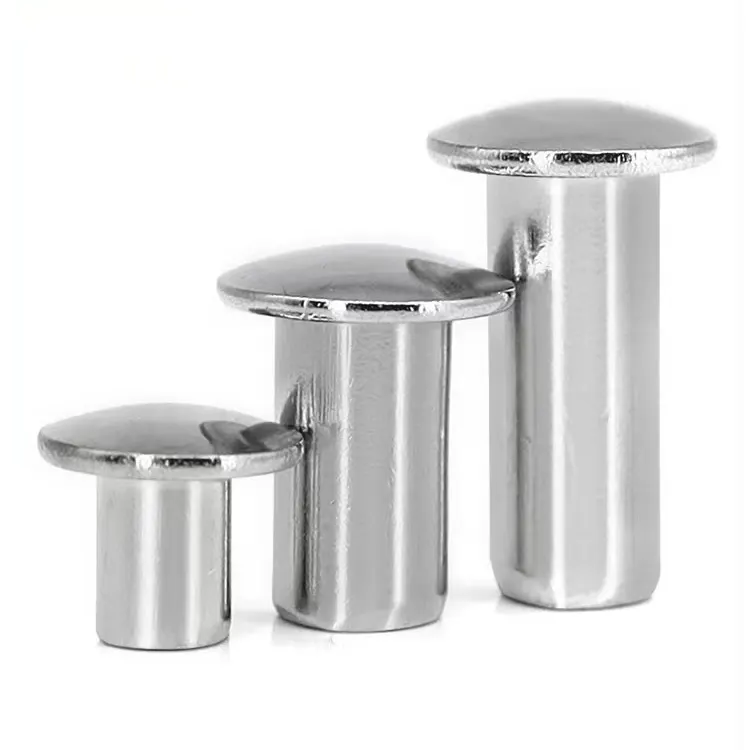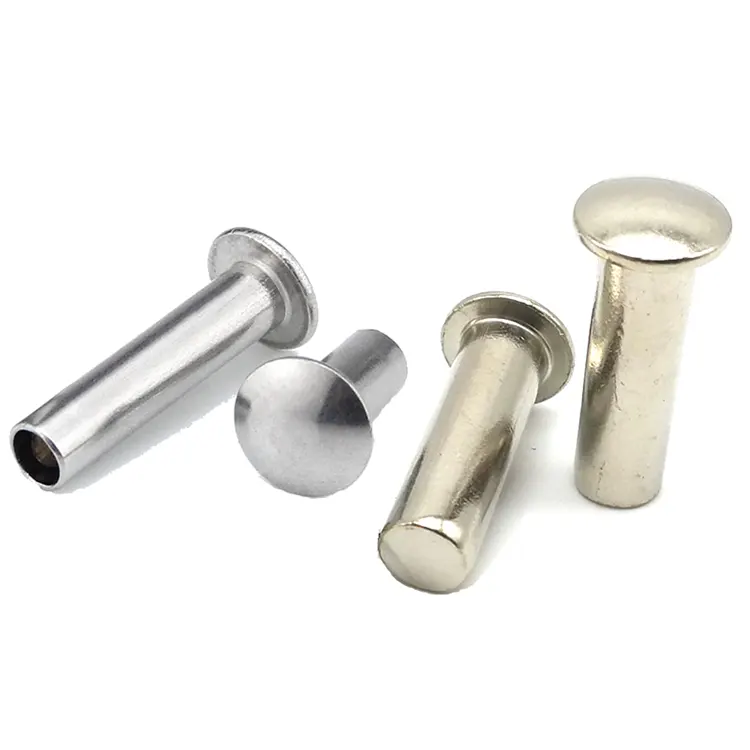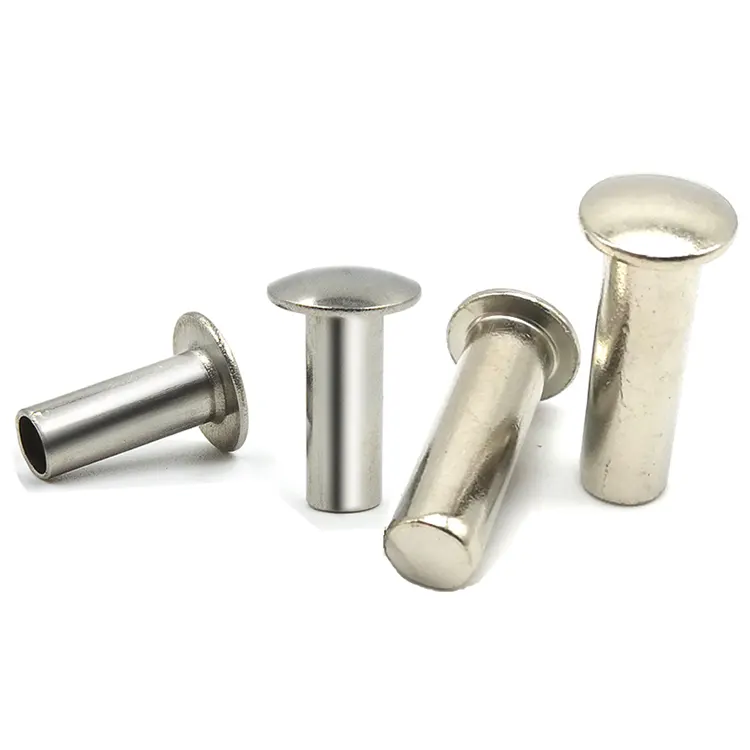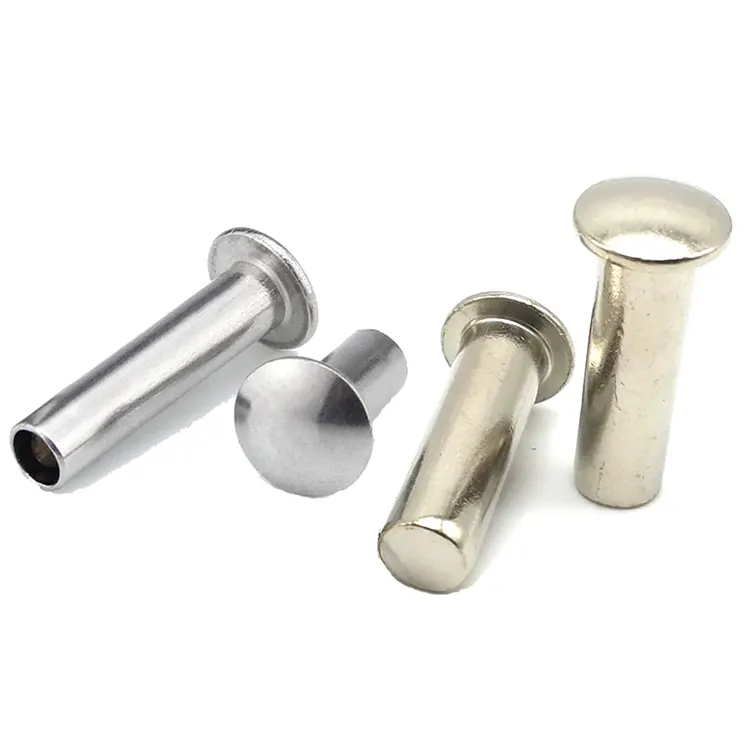특별한 리벳
One of Chinese manufacturer of Special Rivets, offering excellent quality at a competitive price, is Notin. Feel free to get in touch.
In the field of mechanical manufacturing and assembly, rivets are a common fastener used to professionally connect two or more parts. According to the degree of standardization, rivets can be divided into two categories: standard rivets and non-standard rivets. The size, shape and material of standard rivets are uniformly specified, while non-standard rivets are customized according to specific needs. The following will introduce the characteristics and applications of non-standard rivets from multiple aspects.
What are non-standard rivets?
Non-standard rivets are also called special rivets. They refer to rivets that do not meet national standards or industry general standards. Their size, material, structure and other parameters are designed and manufactured according to the specific needs of customers. Due to the different connection requirements of different industries and equipment, standard rivets may not meet the requirements of certain special scenarios, so non-standard rivets came into being.
What are the characteristics of special rivets?
(1) Strong customization: Non-standard rivets can be personalized according to factors such as the use environment, stress conditions, and assembly methods to ensure that they perform well in actual applications.
(2) Diverse materials: In addition to common carbon steel and stainless steel, non-standard rivets can also be made of special materials such as aluminum alloy, copper alloy, titanium alloy, etc. to meet different corrosion resistance, strength and weight requirements.
(3) Flexible structure: The structure of non-standard rivets can be adjusted according to needs, such as head shape, stem diameter, length, etc., and can even be designed to be hollow, semi-hollow or other special shapes.
- View as
유니버설 헤드 리벳
유니버설 헤드 리벳은 리벳 분류 시스템의 기계적 연결 구성 요소 유형입니다. 헤드는 편평한 원호형 구조로 되어 있어 얇은 금속판, 가죽, 캔버스, 목재 등의 재료 접합에 적합합니다. 이러한 유형의 리벳은 냉간 또는 열간 리벳팅 공정을 통해 고정되며 밀봉되지 않은 압력 베어링 환경에서 설치가 쉽고 비용 효율성이 높다는 장점이 있습니다. 유니버셜 헤드 리벳은 카운터성크 리벳과 같은 유사한 제품에 비해 돌출된 반구형 헤드 디자인으로 인해 얇은 금속 시트나 가죽, 캔버스, 목재와 같은 비금속 재료를 리벳팅하는 데 더 적합합니다.
더 읽어보기문의 보내기2피스 리벳
2피스 리벳은 일반적으로 암형 리벳과 수형 리벳의 두 부분으로 구성됩니다. 암리벳의 한쪽 끝에는 내부 구멍이 있고 다른 쪽 끝에는 고정된 끝이 있습니다. 솔리드와 같은 수형 리벳스텝 리벳, 암리벳의 내부 구멍에 맞습니다. 사용하려면 먼저 암형 리벳을 물체에 고정한 다음 수형 리벳을 암형 리벳에 삽입하고 망치로 두드려 두 물체를 결합합니다. 이 디자인은 안정적인 연결 강도를 제공하면서 설치를 단순화합니다. Nuote Metals는 이러한 종류의 2피스 리벳 분야에서 10년 간의 작업 경험을 보유하고 있습니다. 도면을 보내 주시면 감사하겠습니다.
더 읽어보기문의 보내기강철 둥근 머리 리벳
Nuote Metals는 아연 도금, 니켈 도금, Dacromet 도금을 포함한 다양한 마감 처리된 강철 둥근 머리 리벳을 제조 및 판매합니다. 라운드 헤드 리벳은 반원형 헤드 형태로 되어 있어 인장 강도와 전단 강도가 뛰어나고 무거운 하중에도 견딜 수 있습니다. 둥근 머리 디자인을 통해 리벳은 연결 중에 연결 구성 요소에 더 잘 부합하여 접합 안정성과 밀봉이 향상됩니다.
더 읽어보기문의 보내기스틸 팬 헤드 리벳
강철 팬 헤드 리벳은 자동차, 항공 및 건설을 포함한 광범위한 응용 분야에 사용되는 일반적인 산업용 패스너입니다. Nuote Metals는 전 세계적으로 판매되는 강철 팬 헤드 리벳 생산을 전문으로 합니다. 우리는 황동, 스테인레스 스틸, 알루미늄, 구리 등 다양한 재료로 만들어진 다양한 리벳을 제공합니다. 또한 전기 도금, 산세, 아노다이징 등 다양한 표면 처리를 통해 고객 요구 사항을 충족하도록 제품을 맞춤화할 수 있습니다.
더 읽어보기문의 보내기What are the characteristics of special rivets?
(1) Strong customization: Non-standard rivets can be personalized according to factors such as the use environment, stress conditions, and assembly methods to ensure that they perform well in actual applications.
(2) Diverse materials: In addition to common carbon steel and stainless steel, non-standard rivets can also be made of special materials such as aluminum alloy, copper alloy, titanium alloy, etc. to meet different corrosion resistance, strength and weight requirements.
(3) Flexible structure: The structure of non-standard rivets can be adjusted according to needs, such as head shape, stem diameter, length, etc., and can even be designed to be hollow, semi-hollow or other special shapes.
Manufacturing process of special rivets
The manufacturing of non-standard rivets involves multiple links, mainly including:
1.Material selection: Select suitable metal or alloy materials according to the use environment. 2. 2.Cold heading or hot heading: Use pressure processing to form the basic shape of the rivet into the metal blank.
3.Turning or milling: Fine-process the details such as the head and stem of the rivet to ensure dimensional accuracy.
4.Surface treatment: Such as galvanizing, nickel plating, anodizing, etc. to improve corrosion resistance or aesthetics.
Advantages and limitations of special rivets
(1) Advantages: They can meet special needs, improve assembly efficiency and connection reliability, and are suitable for complex or high-demand application scenarios.
(2) Limitations: Since they are customized products, the production cost is high, the delivery cycle is relatively long, and customers are required to provide detailed technical parameters.
How to choose suitable special rivets?
(1) Clarify the needs: Determine the key parameters such as the rivet's operating environment, stress conditions, and corrosion resistance requirements.
(2) Material matching: Select the appropriate material based on actual needs to avoid over-design that leads to increased costs.
(3) Communicate with suppliers: Provide detailed technical drawings or samples to ensure that the non-standard rivets produced meet expectations.
What are the main applications of special rivets?
(1) Aerospace: Aircraft, rockets and other equipment have extremely high requirements for the weight, strength and high-temperature resistance of fasteners. Non-standard rivets can be optimized according to specific needs.
(2) Automobile manufacturing: Certain special models or high-performance vehicles may require non-standard rivets to meet the needs of lightweight or high-strength connections.
(3) Electronic equipment: Precision instruments or small electronic equipment may require micro non-standard rivets to ensure the stability and compactness of the connection.
(4) Construction industry: Some special-structured buildings or decoration projects may use non-standard rivets to meet specific installation requirements.
Market status of special rivets
With the advancement of industrial technology, more and more industries have begun to use non-standard rivets to optimize product design. At present, non-standard rivet manufacturers are mainly concentrated in the Yangtze River Delta and Pearl River Delta regions in China, and can provide a variety of customized services. Due to the high unit price of non-standard rivets, its market size is relatively small, but the demand in the high-end manufacturing field continues to grow.
Future development trends
(1) Lightweight design: With the improvement of energy-saving and environmental protection requirements, non-standard rivets made of lightweight materials will be more popular.
(2) Intelligent production: Automated equipment and digital management will further improve the production efficiency and quality stability of non-standard rivets.
(3) Wider application: Emerging industries such as new energy and robotics may drive the growth of demand for non-standard rivets.
In summary, special rivets are highly customized fasteners that can meet special needs that standard rivets cannot meet. Although its production cost is relatively high, it plays an irreplaceable role in industries such as aerospace, automobiles, and electronics. In the future, with the advancement of manufacturing technology, the application scope of non-standard rivets is expected to further expand.

